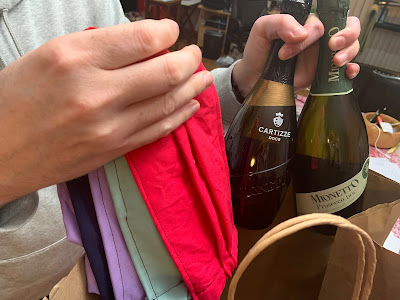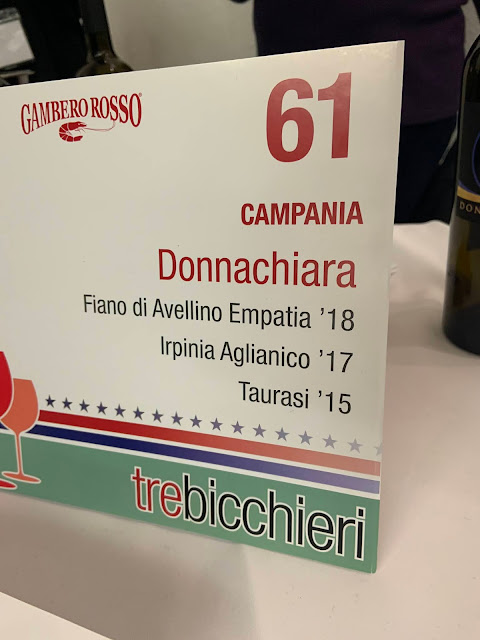It’s another exciting week of wines in May 2020 when the #WinePW bloggers received samples from Yarden Wines, a major importer of Israeli wines in the US. A big thank you to Jeff at Food Wine Click for his sample coordination with the Winery. I’m not a newbie to Yarden Wines. I paired their Yarden Cabernet Sauvignon 2016 and Galil Alon 2014 with a thick cut of grilled Wagyu beef steak in the winter. It was a no-turning-back moment which I surrender to these wines whenever I indulge in expensive steaks. The Yarden Pinot Gris 2018 and Golan Cabernet Sauvignon-Merlot 2017 however are different – they are causal, modern, and your food-buddies that you can trust to deliver at any time with any meal plans!
 |
| Photo Credit: winebytheglass.com |
Wines of Israel
Israel is located in the western Middle East at the very
eastern edge of the Mediterranean Sea, bordering Lebanon, Syria, Jordan and
Egypt. The wine-producing land is about 13,600 acres, which is small by size in
comparison to other New World wine-producing countries. Israel however produces 40–45
million bottles of wine per year. Most Israeli wine is consumed within the
country, as only around 20% is exported each year. There are approximately 300
wineries in Israel, ranging from small operations that produce a few hundred
bottles of wine per year, to large wineries making more than five million
bottles of every variety and in every region.
 |
| Causal, modern, and your food-buddies! |
The US has underpinned the development of the Israeli wine industry over the past few decades through its tremendous consumption demand. This driving force brings some very New World styles and techniques in wines to this old country. Israeli wines, kosher or not, still create some confusion nowadays especially if you overlay the religious and dietary restrictions. To be considered as truly kosher, various products including wines need to be prepared only by Jews as some modern Orthodox Jews believe. Mevushal wines, which are wines that have been flash pasteurized, are consumed by certain highly observant Orthodox Jews. For a wine to be termed as kosher wine, strict Judaism laws have to be followed and applied throughout the winemaking process. As a general rule of thumb, the laws governing the production of kosher wine are not all that different from those required for organic wine production anywhere in the world. For regular wine drinkers like myself, I simply see wines from Israel like these Yarden wine samples are great wines that have made big impact in the wine world and should be widely enjoyed.
 |
| Gilgal Cab Sauvignon – Merlot paired with a thin-cut Wagyu Steak, Alaska Sockeye salmon filet and a side of asparagus grilled on a cask iron pan done indoor! |
Yarden Wines
Yarden Wines is composed of Golan Heights Winery and
Galil Mountain Winery, which exports Israeli wines to the US. Golan
Heights Winery carries three distinct labels: Yarden, Gilgal (Gamla in Israel) and
Mount Hermon. Golan Heights Winery is considered as Israel’s leader in quality,
technological innovation, new variety development, and sustainability. The vineyards of Golan Heights are the
only few wine-producing areas in Israel that enjoy the ideal conditions as in Bordeaux
or Tuscany, for producing internationally renowned wines. They are blessed with the ideal grape growing conditions and terroirs,
including diverse soils (limestone, basalt, alluvial, clay loam), and cool
high-altitude elevation. After planting their first vineyards in the Golan in
1976, the Winery was established in 1983 by four kibbutzim (collective
communities) and four moshavim (cooperative communities). In 1984, the Winery
released its first wine - the 1983 Yarden Sauvignon Blanc - creating great
excitement in Israel and abroad. Since then, Golan Heights Winery has played a
significant role in developing and nurturing Israel’s current wine culture. The
Winery also has altered the way Israeli wines are perceived worldwide and has firmly
placed Israel on the world wine map. In 2012, Golan Heights Winery was named
New World Winery of the Year by Wine Enthusiast.
 |
| The Galilee is a perfect accompaniment with the poke rice bowl which has fresh Ahi tuna cubes and home-made guacamole that lie atop a plate of warm and nutty brown rice |
The Galilee features notes of Asian pear, crab apple, lime,
grapefruit, peach and tropical fruit, coupling with floral characters and
ending with mineral notes. This charming medium-bodied Pinot Gris showcases
freshness and drinkability - perfectly on its own but even better when pairing
it with a poke bowl of warm brown rice with fresh ahi tuna cubes tossed in soya
sauce, lime juice and sesame oil and freshly made guacamole. The acidity of the
wine echoes the limey taste of the tuna and guac. The weight of the wine is
spot-on with the nutty rice and buttery mouthfeel of the guac.
Golan Cabernet Sauvignon-Merlot 2017 (SRP$17.99)
The Golan is a dynamite on the nose with pronounced chocolate, expresso coffee and soft oak. As you taste it, the wine is not overpowering, with unripen cherry, plum, chocolate, roasted coffee, and lighter notes of herbs in the background. It’s flavorful, medium-bodied and by no means heavy-lifting - perfect for a surf and turf dinner that I indulged with a thinly cut Wagyu steak, Alaskan Sockeye salmon fillet and a side of asparagus on a weeknight.
The
grassiness and gaminess of the American Wagyu beef (learn more about Wagyu here) brings me back to this steak over and over again. The wild-caught Alaskan Sockeye
salmon fillet is the healthiest version of the US salmons you could get. If you
can find Scottish salmons, go for it as its milder taste but buttery texture
will definitely go well with this Cab Sauv – Merlot as well.
For other resources, please visit:
https://www.winesofisrael.com/
Disclaimer: The
wines are sample. All opinions in this post are my own.
Check out other #WinePW bloggers' Yarden wines and food:
- Terri at Our Good Life shares “Grilled Mahi Mahi and Gilgal Sauvignon Blanc”
- Gwendolyn at Wine Predator shares “The Eternal Light Shines in Galilee: Yarden’s Merlot, Pinot Gris with Acorn Squash Couscous, Tangerine Feta Spring Salad"
- Wendy at A Day in the Life on the Farm shares “Lamb Stuffed Eggplant and a perfect Wine from Galilee”
- Deanna at Asian Test Kitchen shares “Yarden Wines Paired with Japanese Surf ‘n Turf”
- Rupal at Syrah Queen shares “Off The Beaten Path – Two Wines From Isreal’s Galilee Appellation”
- Linda at My Full Wine Glass shares “Of Israeli wines, long-ago memories, and Harvey’s takeout”
- David at Cooking Chat shares “Pairings for Gilgal Sauvignon Blanc from Israel”
- Payal at Keep the Peas shares “Israeli Wine with the Diverse Cuisine of the Diaspora”
- Nicole at Somms Table shares “Memories of Yarden Wines with a side of Meatball Shakshuka”
- Jennifer at Vino Travels shares “Pairings with Wines from Israel”
- Camilla at Culinary Adventures with Camilla shares “Peppered Brisket, Honeyed Onions, and the 2106 Galil Mountain ‘Ela'”
- Pinny at Chinese Food and Wine Pairings shares “Enjoying Gilgal Cab Sauvignon – Merlot and Yarden Pinot Gris with Grilled Wagyu Steak, Alaska Sockeye Salmon and Poke Ahi Tuna Bowl”
- Susannah from Avvinare shares "Visiting Israel for Memorial Day Through Yarden Wines"
- Jeff at Food Wine Click!shares “Two Fisted Wine Pairing with Yarden Wines”






























